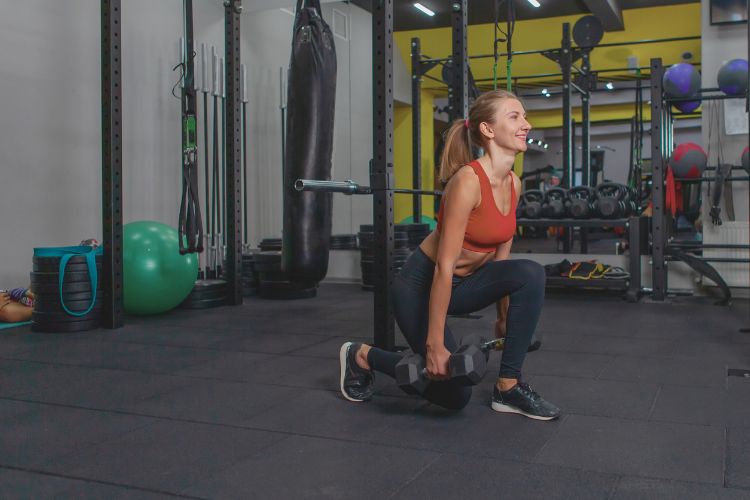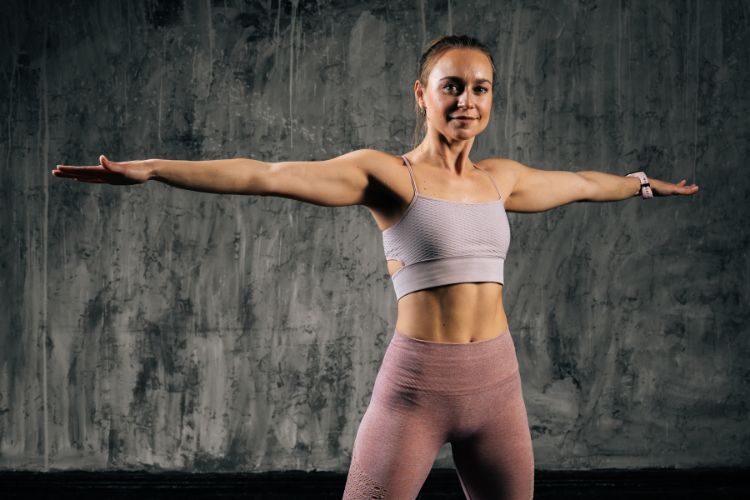Sign up for workout ideas, training advice, reviews of the latest gear and more.






In today’s fast-paced world, finding time to improve your flexibility often feels impossible—yet it’s one of the most valuable investments you can make in your long-term health. A 20-minute full body flexibility workout is the perfect solution for busy women who want to increase mobility, relieve tight muscles, enhance posture, and feel more energized throughout the day. You don’t need a gym, equipment, or prior experience. All you need is your body, a floor mat, and a commitment to giving your muscles the love they deserve.
This complete routine strengthens your body through controlled movements while also lengthening muscles to increase range of motion. As flexibility improves, everyday tasks—like bending, lifting, walking, or working out—become easier and safer. Whether you’re a beginner or an experienced exerciser, a 20-minute flexibility workout can help you feel lighter, freer, and more balanced.
This guide provides everything you need: the benefits of flexibility training, how to warm up properly, step-by-step instructions for each stretch, breathing guidance, and helpful tips to maximize your results.
Most people assume flexibility work is optional, but it’s actually one of the three pillars of fitness alongside strength and cardiovascular exercise. When your muscles are tight, your body is forced to compensate, which can lead to pain, stiffness, and reduced mobility. A short, consistent stretching routine improves body performance while also enhancing mental clarity and stress relief.
Here’s why this 20-minute routine deserves a daily spot in your fitness schedule:
Flexible muscles allow your joints to move through their full range without restriction. This leads to stronger, more efficient movement patterns—both in workouts and daily life.
Sitting all day significantly tightens the hips, shoulders, chest, and back. This routine directly targets those areas to help you release built-up tension.
Poor posture often stems from muscle imbalances and tightness. Stretching the right muscles helps realign your spine and promotes better postural habits.
Slow breathing paired with controlled stretching activates your parasympathetic nervous system, reducing stress and improving mental clarity.
Flexible muscles are less likely to tear or strain. This routine helps keep your body safe during workouts, sports, and daily activities.
Better mobility means more power, strength, and stability. A flexible body moves with ease, making all other workouts more effective.
To get the most out of your flexibility training, it’s important to set your body up for success with a warm, relaxed environment and the right approach.
Stretching cold muscles can reduce effectiveness. Spend 2–3 minutes warming up with:
This increases blood flow and prepares your muscles for deeper stretching.
Your breath controls your body’s ability to relax into each stretch. Use this pattern:
Exhalation helps your muscles release tension, allowing deeper flexibility gains.
Never rush. Stretching is about connection, awareness, and listening to your body—not forcing it.
Flexibility improves with consistency. This routine becomes more effective as your muscles adapt week by week.
This routine stretches every major muscle group—from your neck and shoulders to your calves and lower back. Perform each stretch slowly and hold for the recommended time.
You can complete this flexibility workout any time of day, whether morning, post-workout, or before bed.
Sit or stand tall. Gently drop your right ear toward your right shoulder without lifting your shoulder. Hold for 30 seconds, then repeat on the left side.
Benefits: Relieves tension from the neck, traps, and shoulders—especially helpful if you work at a desk.
Extend your right arm across your chest and use your left hand to gently press it closer. Hold for 30 seconds each side.
Benefits: Loosens tight deltoids and upper back muscles, improving shoulder mobility.
Stand tall and clasp your hands behind you. Lift your chest and gently pull your shoulders back, opening the front of your body. Hold for 30–45 seconds.
Benefits: Counteracts slouching and tech-neck posture.
Extend your arms in front, clasp your hands, and round your upper back while pushing your hands away. Drop your chin slightly.
Benefits: Targets the upper spine, lats, and posterior shoulder muscles.
Stand with feet hip-width apart. Reach your right arm overhead and lean to the left. Hold for 30 seconds, switch sides, and repeat.
Benefits: Stretches the obliques, rib cage, lats, and waistline for better spinal mobility.
Stand tall, bend your right knee, and grab your foot behind you. Keep your knees close and press your hips forward slightly. Hold 30 seconds, switch legs, and repeat.
Benefits: Lengthens quadriceps and hip flexors—common tight areas from sitting or running.
Sit with one leg extended and the other bent. Reach gently toward your toes on the straight leg. Hold for 45–60 seconds per side.
Benefits: Relieves tight hamstrings, improves lower back mobility, and enhances stride length.
Sit upright, bring the soles of your feet together, and let your knees fall outward. Gently press your knees toward the floor. Hold for 1–2 minutes.
Benefits: Improves hip mobility and reduces stiffness in the inner thighs and groin.
Stand facing a wall. Step one foot back, keeping the heel down, and lean forward slightly. Hold for 45 seconds each side.
Benefits: Reduces calf tightness, improves ankle mobility, and helps prevent foot and knee pain.
Step into a lunge position with your right foot forward. Drop your back knee to the floor and press your hips forward gently. Raise your left arm overhead for a deeper stretch. Hold 1 minute each side.
Benefits: Releases tension from the deep hip flexors, improves pelvic alignment, and reduces lower back strain.
Lie on your back. Pull your right knee toward your chest and guide it across your body. Extend your right arm to the side and look toward it. Hold for 1 minute, switch sides.
Benefits: Improves thoracic spine mobility and reduces back tightness.
Get on your hands and knees.
Repeat slowly for 2 minutes, linking movement with breath.
Benefits: Improves spinal flexibility, reduces stiffness, and gently wakes up the core.
Sit back on your heels, extend your arms in front, and gently lower your forehead toward the floor. Hold for 1 minute.
Benefits: Calms the mind, releases tight hips and lower back muscles, and encourages slow relaxation breathing.
Improving flexibility is simple, but consistency and proper technique are key. Use these tips to enhance your results:
The more frequently you stretch, the faster you’ll improve your mobility.
Stretching should feel challenging yet comfortable. Pain is a sign to ease off immediately.
Avoid bouncing movements—they can cause tears or strains.
Aim for 30 to 60 seconds per stretch for best results.
A balanced body is both strong and mobile.
Muscles tighten when dehydrated. Drink water before and after stretching.
This routine is ideal for:
Flexibility training supports every age, body type, and fitness level. Whether you’re building strength, losing weight, or simply trying to feel better daily, this 20-minute routine is a powerful and restorative option.
For maximum benefits, aim for:
After 2–4 weeks, you will notice:
A 20-minute full body flexibility workout is one of the easiest ways to care for your body—even on your busiest days. Just 20 minutes can release tight muscles, improve mobility, prevent injuries, boost recovery, and help you move with greater confidence and comfort.
Consistency is where the magic happens. The more you dedicate time to stretching, the better your body will feel—and the more prepared you’ll be for all your strength and cardio workouts.
If you’re looking to enhance your mobility and build a full-body flexibility routine, this 20-minute session is the perfect addition to your week. To complement the workout, check out our related routines like the “20-Minute Full-Body EMOM Workout: For Strength and Cardio” for an extra dynamic movement session, our “30-Minute Full Body MetCon HIIT Workout for Fat Burn & Strength” for cardio-conditioning, or the “30-Minute Killer Barbell Back Workout for Mass and Strength” to target upper-body strength. If you’re dealing with tight hips or lower-body stiffness, consider our “The Only 25-Minute Back Workout Beginners Need” which supports spinal health, or invest in your recovery with the “Best Breakfast to Eat After a Workout for Recovery and Energy” to fuel your flexibility efforts. Together, these five resources make a powerful toolkit to support your movement, strength, recovery, and overall wellness.
Stay up to date on the latest women’s health, fitness and lifestyle trends and tips.